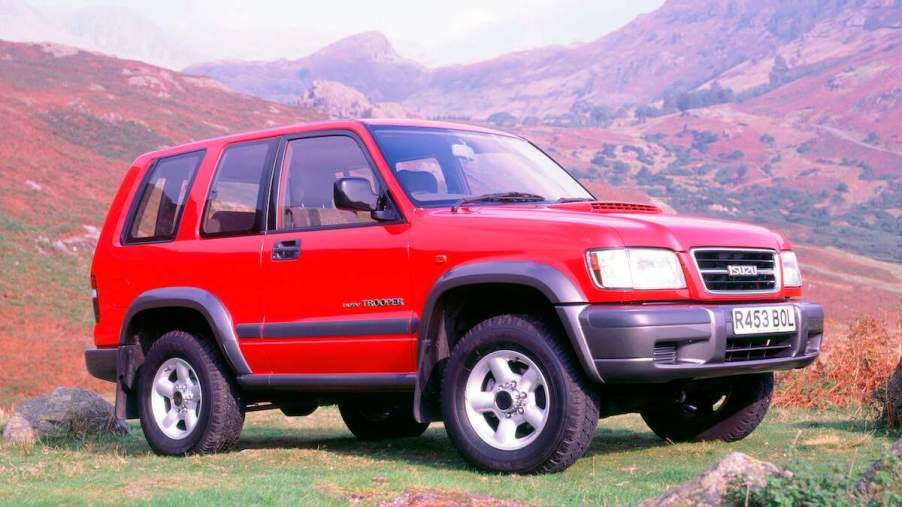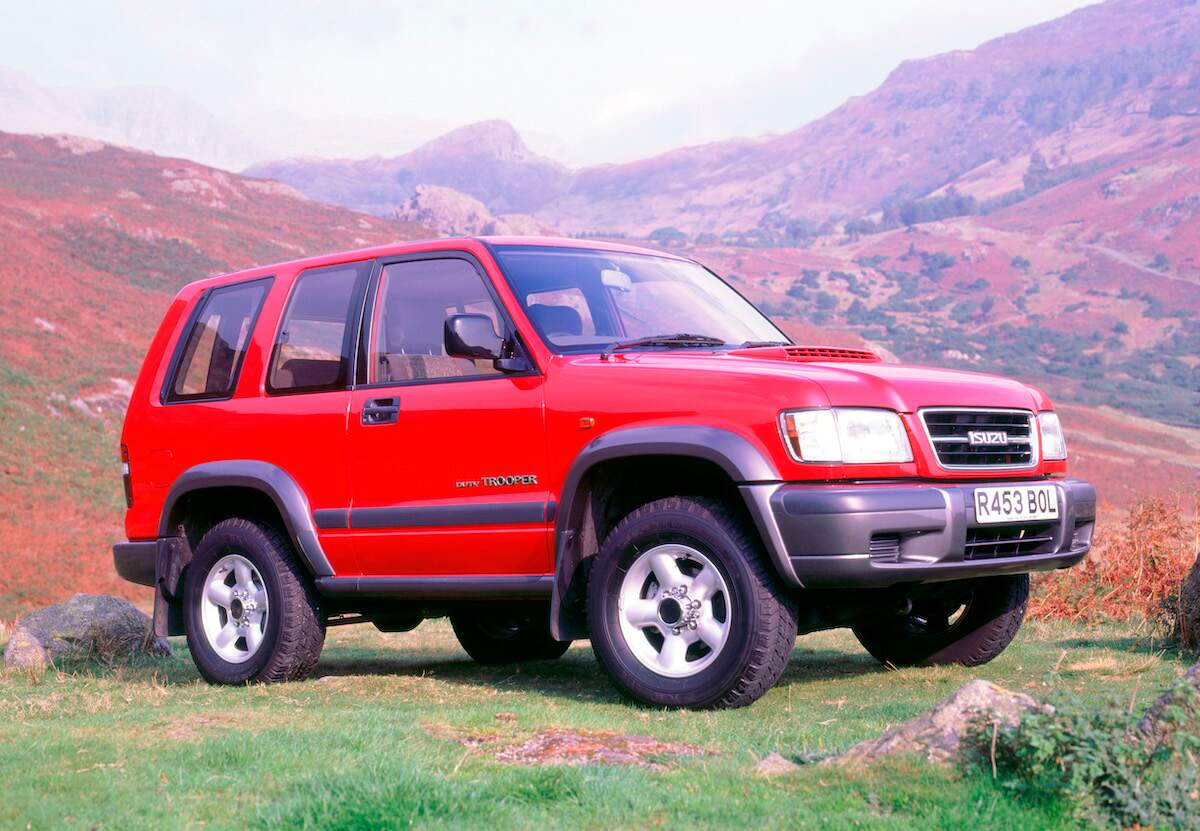
What Is a Badge-Engineered Car, and What Are the Best and Weirdest Examples?
“Badge engineering” describes how automotive manufacturers adopt cars from another automaker, make little or no changes, and sell them under their badge. That practice results in a badge-engineered car, also known as a rebadged car. Auto manufacturers use this method to save production costs.
However, badge engineering doesn’t always yield good results. Below are three of the best and worst badge-engineered cars ever produced.
The 3 best badge-engineered cars of all time

Different automotive manufacturers have produced badge-engineered vehicles over time. Despite being virtually indistinguishable, some of these vehicles have become better than the original. Below are the three best badge-engineered cars ever produced.
Isuzu Trooper
The Isuzu Trooper is the most badged-engineered vehicle in the automotive industry. It has been sold under 12 other names in various countries. The first generation was from 1981 to 1991, while the second spanned between 1991 and 2007. Over those two generations, the Isuzu Trooper was rebadged as the Caribe 442, Chevrolet Trooper, Acura SLX, Subaru Bighorn, Honda Horizon, Opel Monterey, Vauxhall Monterey, Holden Monterey, HSV Jackaroo, and SsangYong Korando Family. Its wide adoption was thanks to its off-roading capabilities and rugged, basic transportation. It rivaled the likes of the Land Rover Range Rover and Toyota Land Cruiser.
Aston Martin Cygnet
The Cygnet is arguably the most bizarre Aston Martin has ever produced. The company introduced it in 2011 to meet European emissions regulations. This tiny car was based on the Toyota iQ but boasted unique features. They include a custom Aston Martin front grille, distinctive taillights and headlights, and a V8 Cygnet version, making it feel more upscale, CarsCoops reports.
Vauxhall VXR8
The Australian-based auto manufacturer Holden is known for producing one of the most desirable sports sedans. In its mission to introduce these types of cars in the United Kingdom, Vauxhall imported the HSV ClubSport and the HSV GTS as the Vauxhall VXR8. The HSV ClubSport was produced between 2007 and 2009, while the HSV GTS was made between 2010 and 2017. Despite being a decent call, the Vauxhall VXR8 didn’t rake in massive sales in the U.K. However, it gave British enthusiasts a dream car with a local marque.
The 3 weirdest badge-engineered cars ever produced
Even though some badge-engineered cars have seen considerable success, others haven’t enjoyed the same. Here are three of the worst rebadged vehicles ever built.
Honda Passport
You’re probably familiar with the modern Honda Passport SUV. But did you know it was once a rebadged Isuzu Rodeo? This version was plagued with issues that resulted in numerous safety recalls between 1997 and 2002. Common problems with the ’90s Honda Passport were failing O-rings and faulty fuel level sensors.
Suzuki Reno
The partnership between General Motors and Daewoo in the 2000s yielded a surprisingly rebadged Daewoo Lacetti car, the Suzuki Reno. It came after a massive success with the Geo Metro, a rebadged Suzuki Swift. General Motors avoided making significant changes apart from adding marker lights and reflectors to meet regulatory requirements. Consequently, the Suzuki Reno was unsuccessful in the U.S. market.
Cadillac Cimarron
The Cadillac Cimarron, a rebadged Chevy Cavalier, resulted from GM’s rush to compete against the popular Mercedes 190 E and Audi 5000 luxury sedans in 1979. But the hasty attempt didn’t distinguish the Cimarron as a worthy competitor, especially with its base 88-hp 1.8-liter four-cylinder engine. Cadillac tried to amp up the luxury with a leather interior and upgraded V6 engine. Still, the Cimarron couldn’t beat its European rivals. Consequently, Cadillac killed off this rebadged car in 1988.


